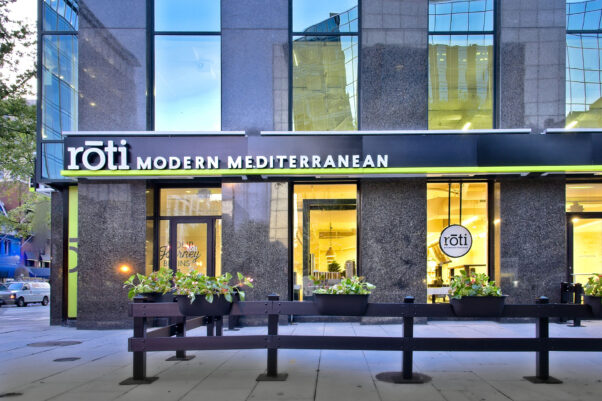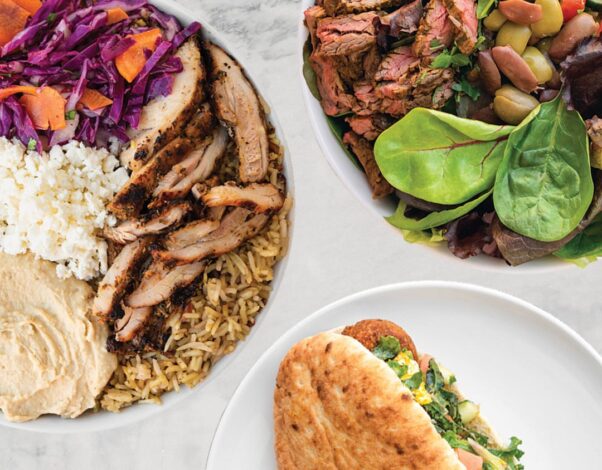Roti Mediterranean Files Ch. 11 Bankruptcy
Roti, the Chicago-based Mediterranean fast-casual chain with locations in D.C. and Maryland, said on Friday it declared Chapter 11 bankruptcy, joining a parade of summertime restaurant restructurings.

The Roti restaurant at 1747 Pennsylvania Ave. NW. (Photo: Itek Construction)
The chain said it plans to use the Chapter 11 process to find new investors or a buyer as it reorganizes its finances.
The company said that it hopes to ensure that its locations in the DMV, Chicago and Minneapolis will remain open while it looks for new investors or purchasers while reorganizing its finances. In D.C., the chain has locations at 1311 F St. NW, 1629 K St. NW, 1747 Pennsylvania Ave. NW, 2221 I St. NW and 1275 First St. NE. It also has a restaurant at 4461 Willard Ave., Rockville.
In a press release Friday, the company said it plans to continue to offer its entire menu, catering, loyalty programs across its locations. The company was founded in 2006 in Chicago.
The move follows a tough few years for the chain, which currently has 19 locations, about half the number it operated before the pandemic. Many of the closures came in 2021, as business to urban areas where half of Roti restaurants were located, was slow to return. The chain closed a third of its restaurants that year.
But Roti closed four restaurants last year, too. System sales declined 12 percent to $35.6 million.

Roti serves Mediterranean bowls, salads and pitas. (Photo: Roti)
As Roti navigates restructuring, the company plans to work with landlords and suppliers to keep locations open and its employees, the press release said.
Roti is hardly alone. Sixteen restaurant chains have declared bankruptcy this year and several more are believed to be near that stage. Hooters is believed to be close to such a filing. The fast-casual burger chain BurgerFi just last week hired a chief restructuring officer, often a precursor to such a move.
Numerous other chains are restructuring out of court, meanwhile, as lenders and company owners hope to avoid the time and expense of court-ordered restructurings.
Many restaurant chains have struggled to get finances in order coming out of the pandemic as costs increased, profits weakened and the cost of debt increased—assuming it is available at all.
“After careful consideration, filing for bankruptcy was the best way to address our challenges, including financial performance, higher costs, mixed location performance and tough market conditions,” CEO Justin Seamonds said in a statement.




